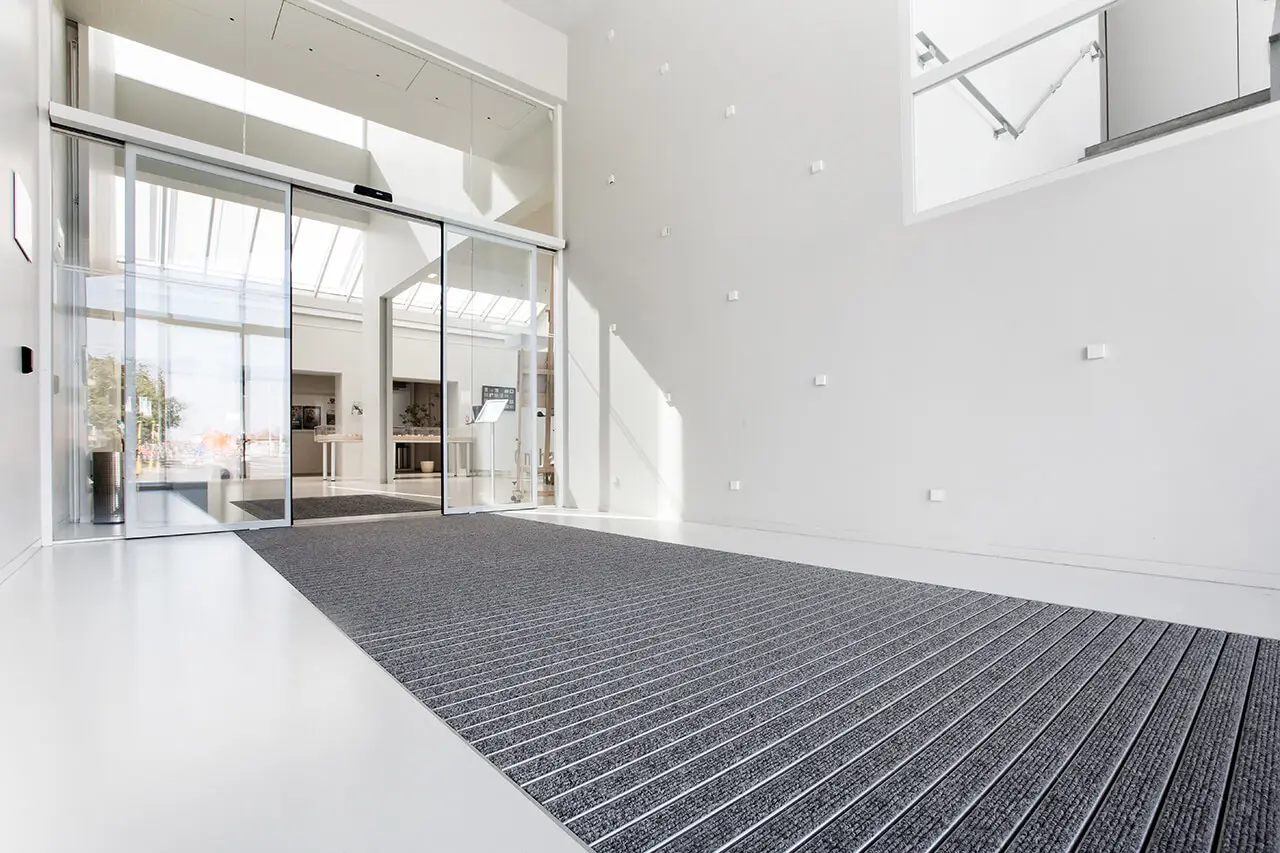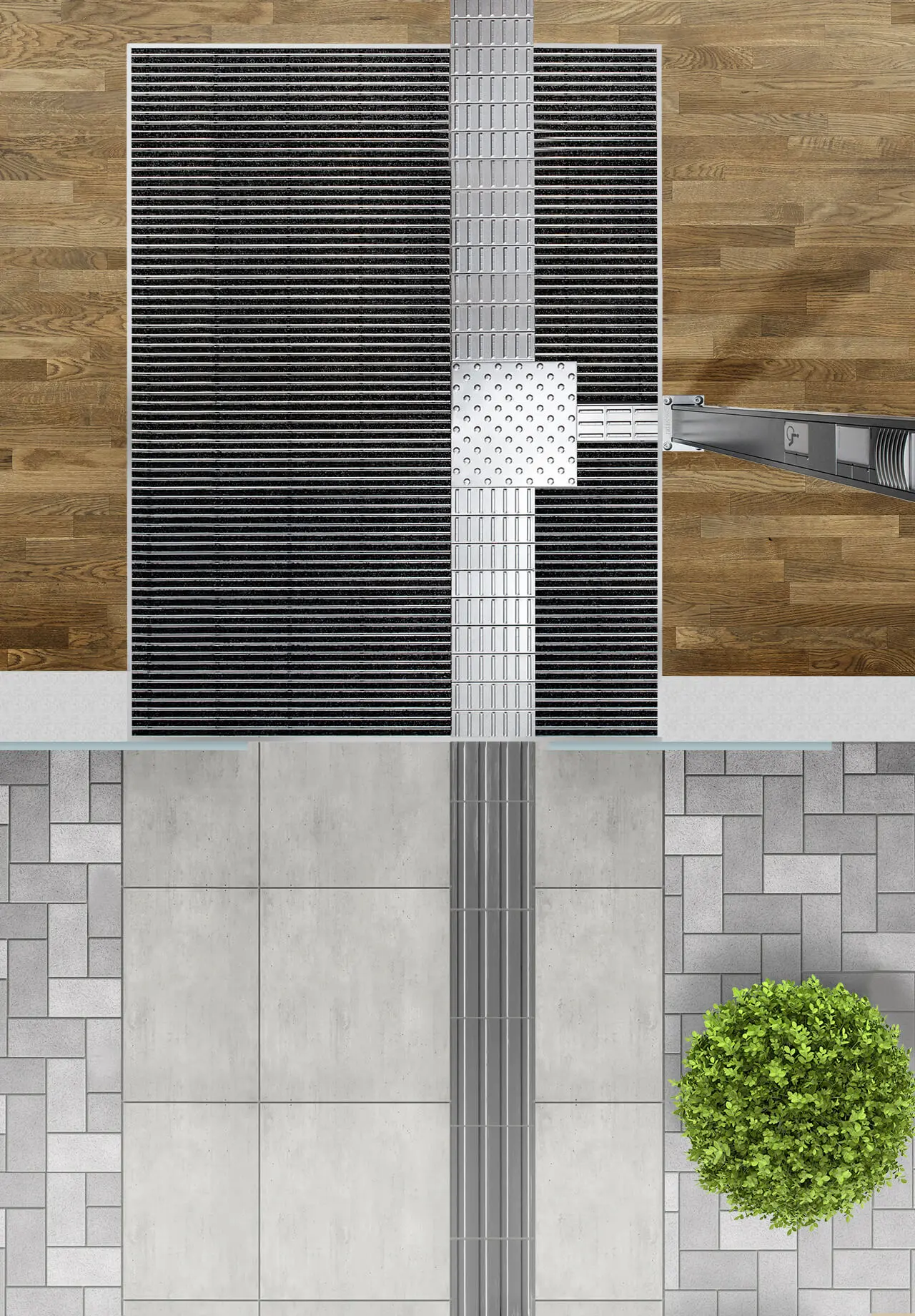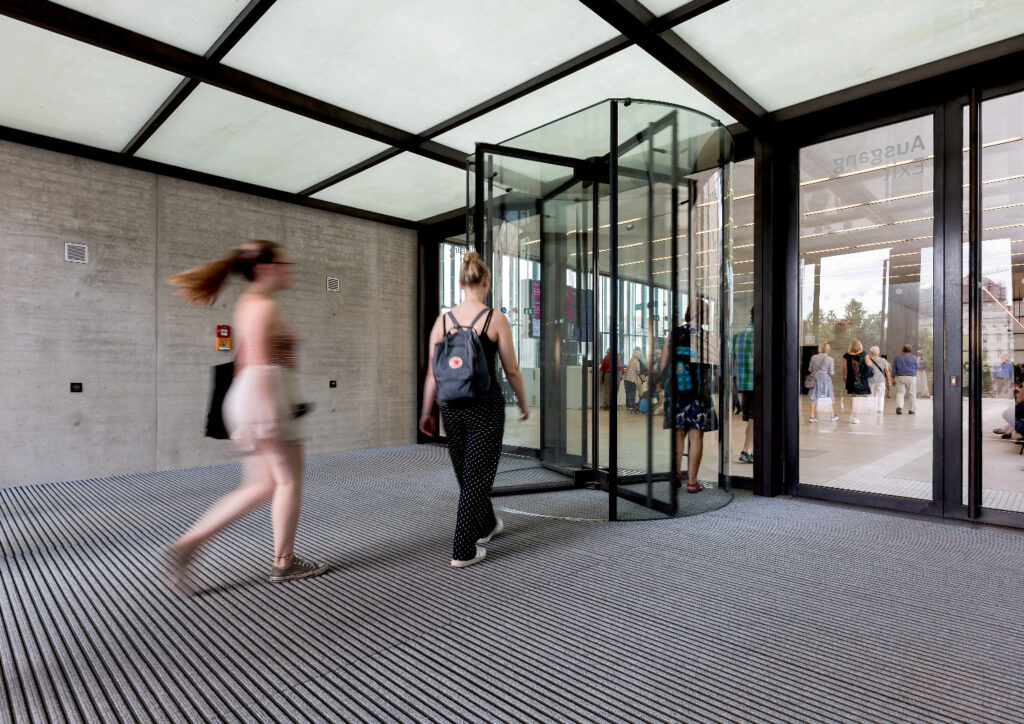Barrier-free access impacts every aspect of life: places and rooms as well as means of communication. Not having barrier-free access into these areas makes it impossible for all those affected to access cultural and political life as well as work and leisure activities, which can include young and old people with a disability or temporary impairment. Barrier-free access affects us all. Why? Only 4 % of all disabilities are congenital; most are a result of illness or accidents. And, approximately 25 % of people with a severe disability are 75 or older, and a half are between 55 and 75. And the average age is increasing – for all of us. *
Barrier-free access means much more than just ramps, wide doorways and low-floor buses. To achieve barrier-free living, buildings and spaces, work places and homes, means of transport and objects, services and leisure facilities must be accessible to everyone without assistance. This includes lifts and ramps as well as easy read forms in simple language, sign language interpreters, and barrier-free access to the digital world. Barrier-free access obviously helps everyone: parents with pushchairs use lifts as well as people with reduced mobility, simple language helps people with learning disabilities as well as those who do not speak or understand the language well.
Building barrier-free access
Urbanisation of public spaces also means minimising hazards for everyone. Both the general understanding of modern life and legal provisions are adapting to this and up-to-date measures to ensure people using a building can do so safely are becoming more and more important – and not just for planners and architects. In spite of this, there is still a long way to go to achieve barrier-free access.
Inadequate barrier-free access is clearly visible in our built environment, for example, if a lift is out of order or door bells are located out of reach of wheelchair users. The regulations for building barrier-free access should remedy this. For example, there are DIN standards for stairs and lifts as well as for floor surface indicators, guidance systems, tactile and acoustic warnings. The DIN standard 18040 – Construction of accessible buildings, section 4.3.3 Doors states:
Doors must be clearly discernible, easy to open and close, and safe to pass through.
Floor-level door stops and thresholds are not permissible. If they are essential for technical reasons, they not be any higher than 2 cm.
Cognitive disabilities such as blindness and visual impairment should therefore be taken into consideration during the planning phase – and the entrance mat system must obviously not represent a trip hazard in doorways. Tactile guidance systems can make it significantly easier for blind people and those with a visual impairment to orient themselves when they enter a building. Appropriate guidance systems are already in place in many outdoor areas such as pavements and squares. If a guidance system for the blind is also in place in the indoor areas of a building, the outdoor and indoor guidance systems are often interrupted by the floor mat in the entrance area creating an unnecessary barrier which makes is difficult to find the route again.

DIN-compliant solution
Together with Hoba Steel, a manufacturer of guidance systems for the blind for indoor and covered outdoor areas and specialist in stainless steel wall and floor concepts, emco bau has developed an entrance mat with an integral guidance system for the blind. This solution combines the outdoor guidance system with the indoor floor surface indicators. The emco SPIN® SAFE tactile guidance system satisfies the highest functional demands and is also aesthetically pleasing as it offers a consistent optical appearance made from stainless steel as soon as the entrance mat is accessed. The guidance system complies with all the requirements to DIN 32984 Tactile walking surface indicators in public areas, which specifies the requirements for floor surface indicators and other guidance elements. Its aim is to optimise the safety and mobility of blind and visually impaired people in public spaces. The standard therefore applies to areas to which the public has access. To this end, it defines the shape and dimensions of the profiles, for example, and the required light/dark contrast of the floor surface indicators and many other aspects.
emco tactile guidance system
emco SPIN® SAFE, with its perfect combination of cleaning functionality, tactile floor-level information and effective brightness contrast, complies with the requirements and is already being used in entrance areas in hospitals, banks, office buildings and rehabilitation centres. This tactile guidance system reduces barriers for blind people and the visually impaired in these areas and can be integrated into many emco entrance mats. emco SPIN® SAFE allows blind and partially sighted people to easily and clearly detect directions and changes in direction with their feet or canes. However, the robust stainless steel elements offer even more benefits: in addition to being tactile floor surface indicators, they produce a clear change in the auditory response when using a cane.

Other barrier-free solutions
The emco TLS tactile guidance system for the blind is a technical alternative which complies with the light/dark contrast requirements of international standards. Lateral profiles support both the tactile guidance and the system’s exceptional cleaning capacity. Thanks to the slightly different heights, they can be detected when walking with the soles of the feet and with the aid of a cane. This guidance system for the blind enables enables blind and visually impaired people to find doors, stairs, lifts, etc. and provides orientation in larger areas. The guidance system also highlights obstructions and hazards. The floor guidance system also make it easier for people without any visual impairment to orient themselves. The material offers high levels of contrast for people with limited vision and can therefore be more easily distinguished from the usual entrance mat.
The emco offer for the blind and visually impaired is rounded off by the emco MAXIMUS® ASSISTANCE clean off mat with its integral tactile floor guidance system. It can be installed in different ways and makes orientation and location of destinations easier in entrance areas and buildings. It can be also used as a reliable continuation of existing floor guidance systems – for example as a transition from the pavement to the building into the interior. What’s more, the guidance system, which can be integrated into the mat however you choose, provides floor information at different heights that can be felt both with the sole of the foot and with a cane. High-contrast colouring offers additional assistance. emco MAXIMUS® ASSISTANCE is particularly suitable for retrofitting.

